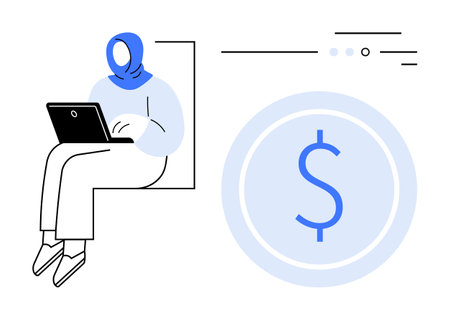1. Assess Your Business Risks
Understanding Why Risk Assessment Matters
Before you shop for general liability insurance, it’s important to understand the specific risks your business faces. Every business is unique, and the right insurance policy should reflect your actual needs—not just a one-size-fits-all solution.
Common Business Risks to Consider
Start by thinking about what could go wrong in the course of your daily operations. For example, do customers visit your location? Do you handle other people’s property? Does your work involve physical products or on-site services? All these factors can affect the kind of coverage you need.
Examples of Business Risks
| Risk Type | Description | Example Businesses |
|---|---|---|
| Bodily Injury | Someone gets hurt at your business location | Retail stores, restaurants, gyms |
| Property Damage | Your work damages someone else’s property | Contractors, movers, cleaning services |
| Advertising Injury | Your advertising accidentally infringes on another company’s rights | Marketing agencies, online retailers, consultants |
| Reputational Harm | A claim is made that your business slandered or libeled someone else | Media companies, bloggers, public relations firms |
How to Evaluate Your Exposures
Take a close look at how your business operates and make a list of all possible risk scenarios. Think about:
- Your physical location and how much foot traffic you get from clients or visitors.
- The types of products or services you offer and any potential hazards involved.
- If you travel to clients’ sites or if employees work offsite.
- The legal requirements for your state or industry.
- Your past history with claims or incidents (if any).
Tip:
If you’re not sure where to start, talk to other business owners in your field or consult with an insurance agent who understands your industry. The more specific you are about your risks, the easier it will be to find a policy that fits your business perfectly.
2. Gather Essential Business Information
Before you can buy general liability insurance, you’ll need to collect some important details about your business. Insurance companies use this information to assess your risk and provide an accurate quote. Getting these facts organized ahead of time makes the process much smoother.
Key Details to Prepare
Here are the main pieces of information you should have ready:
| Detail | Why It Matters |
|---|---|
| Business Structure | Are you a sole proprietor, LLC, corporation, or partnership? Your legal structure affects your coverage needs and premium rates. |
| Business Operations | Describe what your business does. Insurance companies want to know your industry and the nature of your services or products. |
| Annual Revenue | Your gross revenue helps insurers determine how much risk is involved in covering your business. |
| Number of Employees | The size of your team can impact both the cost and type of coverage needed. |
| Physical Location | Your business address or locations influence risk factors like foot traffic, local regulations, and property characteristics. |
Tips for Gathering Information
- Review recent tax returns or financial statements for accurate revenue numbers.
- Check your business license or formation documents for legal structure details.
- Create a simple summary of your operations, including any high-risk activities.
- Count all employees, including part-time and seasonal staff.
- Note every physical location where you operate, even if it’s a home office or shared space.
Why This Step Matters
The more accurate and complete your information, the better your chances of getting the right policy at a fair price. Being prepared also shows insurers that you’re organized and serious about protecting your business.
![]()
3. Shop for Insurance Providers
Now that you know what kind of general liability insurance your business needs, the next step is to shop around for insurance providers. It’s important to do your homework and find companies or brokers that are experienced, trustworthy, and understand your specific industry. Not all providers offer the same coverage options or customer service, so comparing them can help you get the best deal.
How to Research Insurance Providers
Start by looking for insurance companies or licensed brokers that specialize in business insurance. Check their online reviews, Better Business Bureau ratings, and any complaints filed with your state’s Department of Insurance. You can also ask other business owners in your network for recommendations.
Key Factors to Compare
When evaluating different providers, pay attention to these factors:
| Factor | What to Look For |
|---|---|
| Reputation | Strong customer reviews and high ratings from independent agencies like AM Best or J.D. Power |
| Experience in Your Industry | Providers who understand the risks and regulations unique to your field |
| Coverage Options | Policies tailored for small businesses or your specific industry needs |
| Customer Service | Easy-to-reach support, clear communication, and helpful agents |
| Pricing & Discounts | Competitive premiums and available discounts for bundling policies or safe business practices |
Tip:
Always request quotes from at least three different providers. This way, you can compare prices and coverage side by side before making a decision.
4. Request and Review Quotes
Once youve identified a shortlist of insurance providers, the next important step is to reach out for quotes. Each business is unique, so its best to contact your selected insurers directly and provide details about your operations. This allows them to tailor their general liability insurance offers specifically for you.
How to Request Quotes
Most insurers make it easy to request a quote online, over the phone, or through an agent. Be prepared to share information like your business type, annual revenue, number of employees, and any previous claims. The more accurate your information, the more precise your quote will be.
What to Look For in Your Quotes
When you receive multiple quotes, don’t just look at the price. Carefully review each offer for:
| Feature | What It Means | Why It Matters |
|---|---|---|
| Coverage Options | The types of risks and incidents covered by the policy | Makes sure your specific business needs are protected |
| Premiums | The amount you pay (monthly or annually) for the coverage | Affects your business budget and cash flow |
| Exclusions | Situations or incidents not covered by the policy | Helps avoid surprises when filing a claim |
| Policy Limits | The maximum amount the insurer will pay for a claim or during a policy period | Ensures you have enough protection in case of a major incident |
Tips for Reviewing Quotes
- Compare apples to apples: Make sure you’re comparing similar coverage limits and deductibles between policies.
- Ask questions: If something isn’t clear—like what’s included or excluded—don’t hesitate to ask your insurance agent for clarification.
- Check additional benefits: Some policies may include extra perks, such as risk management support or access to legal advice.
- Read the fine print: Pay attention to all terms and conditions before making a decision.
Your Next Step
After carefully reviewing all quotes side by side, you’ll be ready to move forward with the policy that best fits your business needs and budget.
5. Purchase and Activate Your Policy
Once youve compared different general liability insurance options and found the right policy, its time to move forward with buying and activating your coverage. This step ensures your business is protected from day one. Let’s break down what you need to do:
Choose the Best Policy for Your Needs
Take a close look at the quotes you’ve received. Think about your business’s unique risks, budget, and any requirements from clients or landlords. Choose the policy that offers the right balance of coverage and cost.
| Factor | What to Consider |
|---|---|
| Coverage Limits | Does it meet your risk level and contract needs? |
| Premium Amount | Is it affordable for your business? |
| Deductibles | Can you handle the out-of-pocket cost if you file a claim? |
| Add-Ons | Do you need extra protection, like professional liability? |
| Carrier Reputation | Is the insurer reliable and responsive? |
Complete the Application Process
The application is usually straightforward. You’ll fill out forms online or with an agent, providing details about your business type, size, location, revenue, and operations. Double-check all information for accuracy so there are no issues later.
Make Your Initial Payment
Most insurers allow you to pay your first premium by credit card or electronic transfer. Some offer monthly payment plans, while others may require payment in full upfront. Check which option works best for your cash flow.
Common Payment Options:
- Credit Card (Visa, Mastercard, etc.)
- E-Check / ACH Transfer
- Mail-in Check (less common)
- Automatic bank draft (for ongoing payments)
Get Proof of Insurance Immediately
Once your payment is processed, you should receive a Certificate of Insurance (COI). This document proves youre covered—a must-have if clients or landlords ask for proof before starting work. Save a digital copy and print extras just in case.
Pro Tip:
If you ever update or renew your policy, make sure to get an updated COI so all your records stay current.


